Abstract
What if the urban fulfillment center was no longer a hidden infrastructure - meant to be unseen and unnoticed - but instead a new public marketplace of experience, one that serves and attracts people without ever being physically occupied by them? As these centers start to move into and dominate prime urban real estate, they remain isolated, enclosed, and detached from civic engagement. This thesis challenges this typology by re imagining the fulfillment center as a layered exposed system - an autonomous machine for logistics that becomes an experiential space for the public.
By compressing and elevating storage, operations, and parking, the center no longer solely prioritizes efficiency but creates new opportunities for urban interaction on the ground. These visual, physical, and spatial by products - such as the display and reselling of returned goods - reveal our patterns of consumption, transforming infrastructure into a shared urban spectacle.

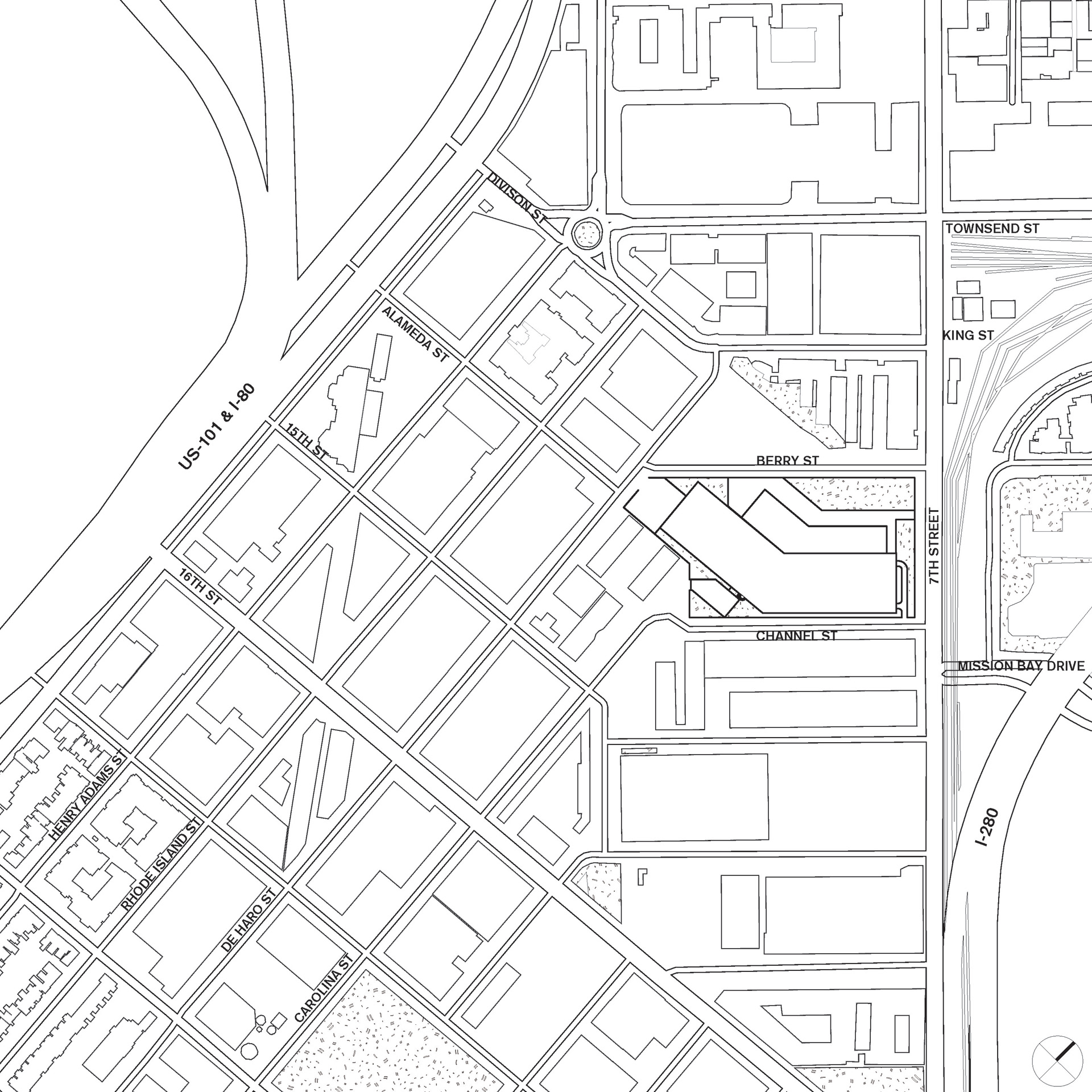
Process
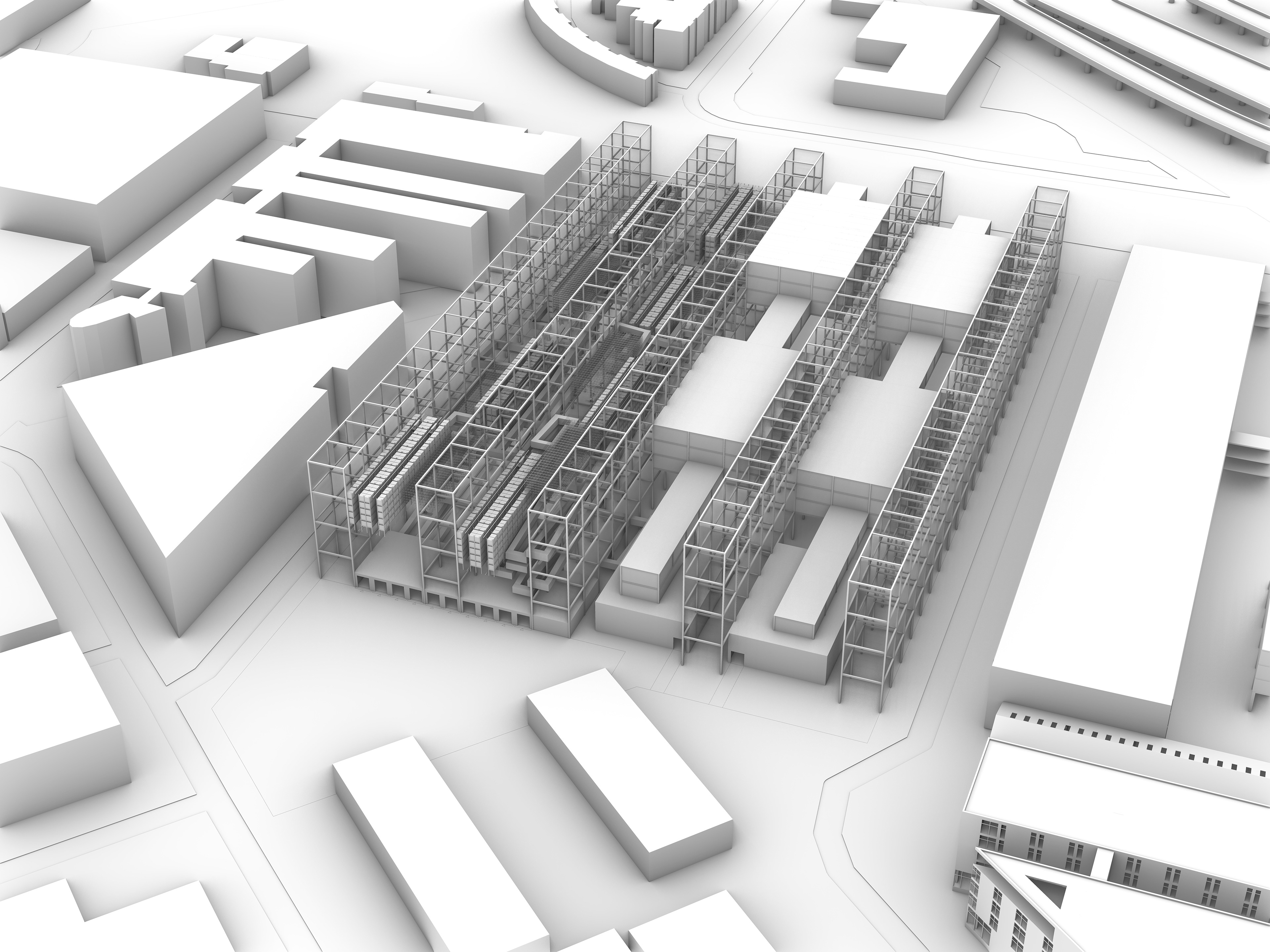
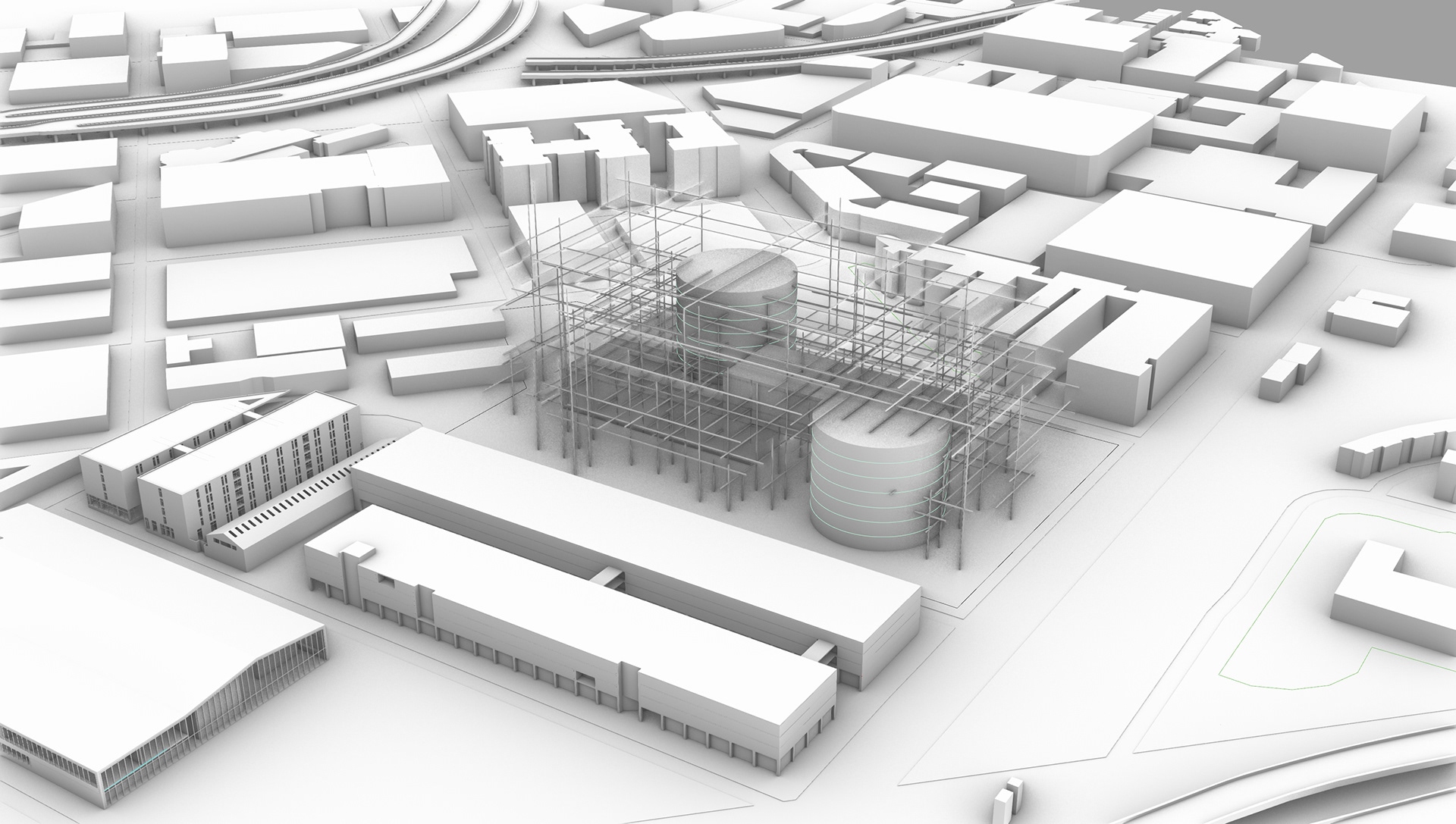
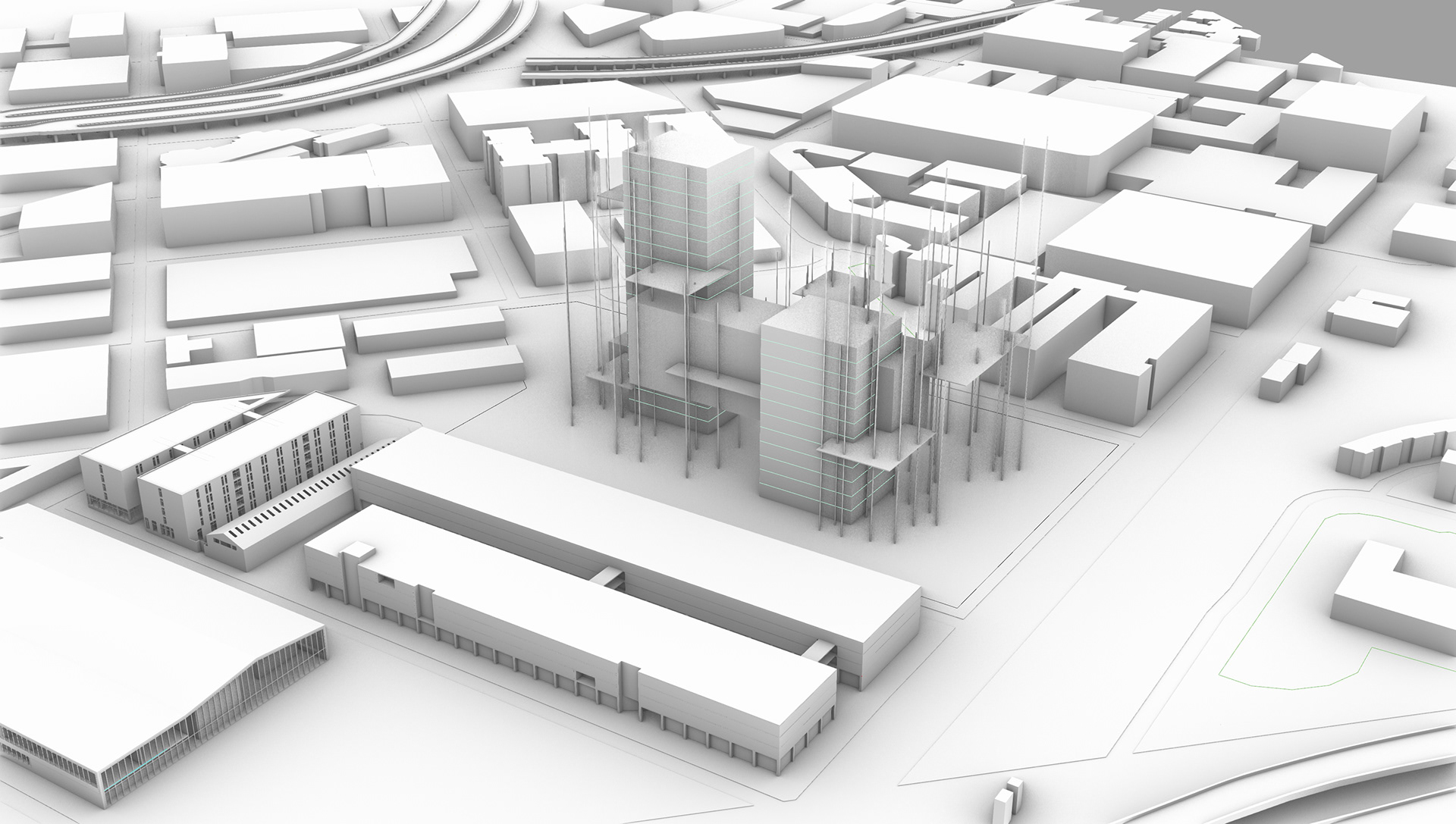
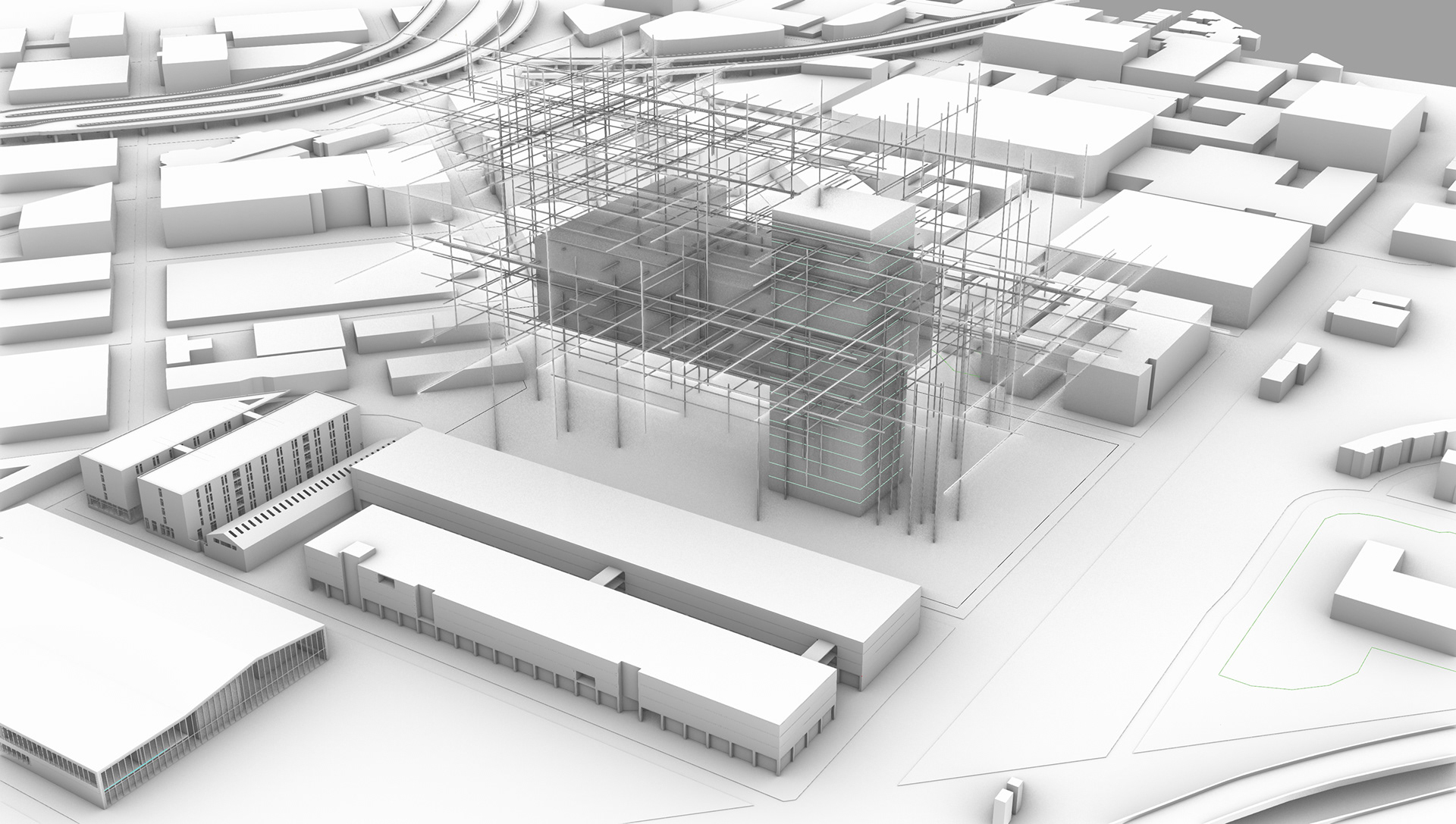
Programs Used
Rhino | Illustrator | Photoshop